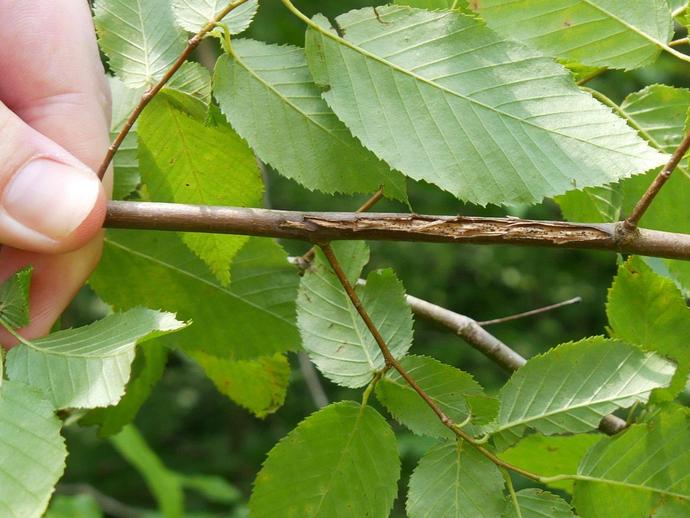August 16, 2020
Here's something neat that I spotted a little after the periodical cicada emergence, but I forgot to post the picture until I stumbled across it today. Have you ever noticed a little stripped area on a small twig like the one seen here? You've just found some cicada eggs! Or at least a spot where some cicada eggs used to be!
After mating, female cicadas land on small twigs and use their ovipositors (a tubular egg-laying organ) to cut small slits in the twig's surface and lay an egg in each slit. After the eggs hatch, the tiny cicada nymphs emerge from the slits and drop to the ground. Fortunately, they're so tiny that the fall doesn't hurt them. Once they reach the ground, they dig into the earth and begin feeding on juices from plant roots. In the case of periodical cicadas, that's how they'll spend their time for the next 13 to 17 years!
While cicadas don't cause a lot of damage feeding on tree roots, the egg laying process does cause cosmetic damage to trees. After a female lays eggs inside a twig, the twig generally dies, a condition known as "flagging." After a big cicada emergence, you might notice a whole lot of otherwise healthy trees with a bunch of dead brown twigs. While this won't kill a mature tree, the damage to young trees can occasionally be severe enough to kill the tree. Fortunately, this can be prevented by covering young trees with quarter-inch netting. #BenInNature
ABOUT THIS POST
Social distancing can be difficult, but it presents a great opportunity to become reacquainted with nature. While he is working from home, Administrator of Science Ben Williams is venturing outdoors each day to record a snapshot of the unique sights that can be found in the natural world.
NATURE PHOTO IDENTIFICATIONS
If you discover something in nature that you would like help identifying, be sure to message us right here on Facebook with a picture (please include location and date of picture) and we'll have our experts help you identify it!

 Hours & Admissions
Hours & Admissions Directions
Directions

